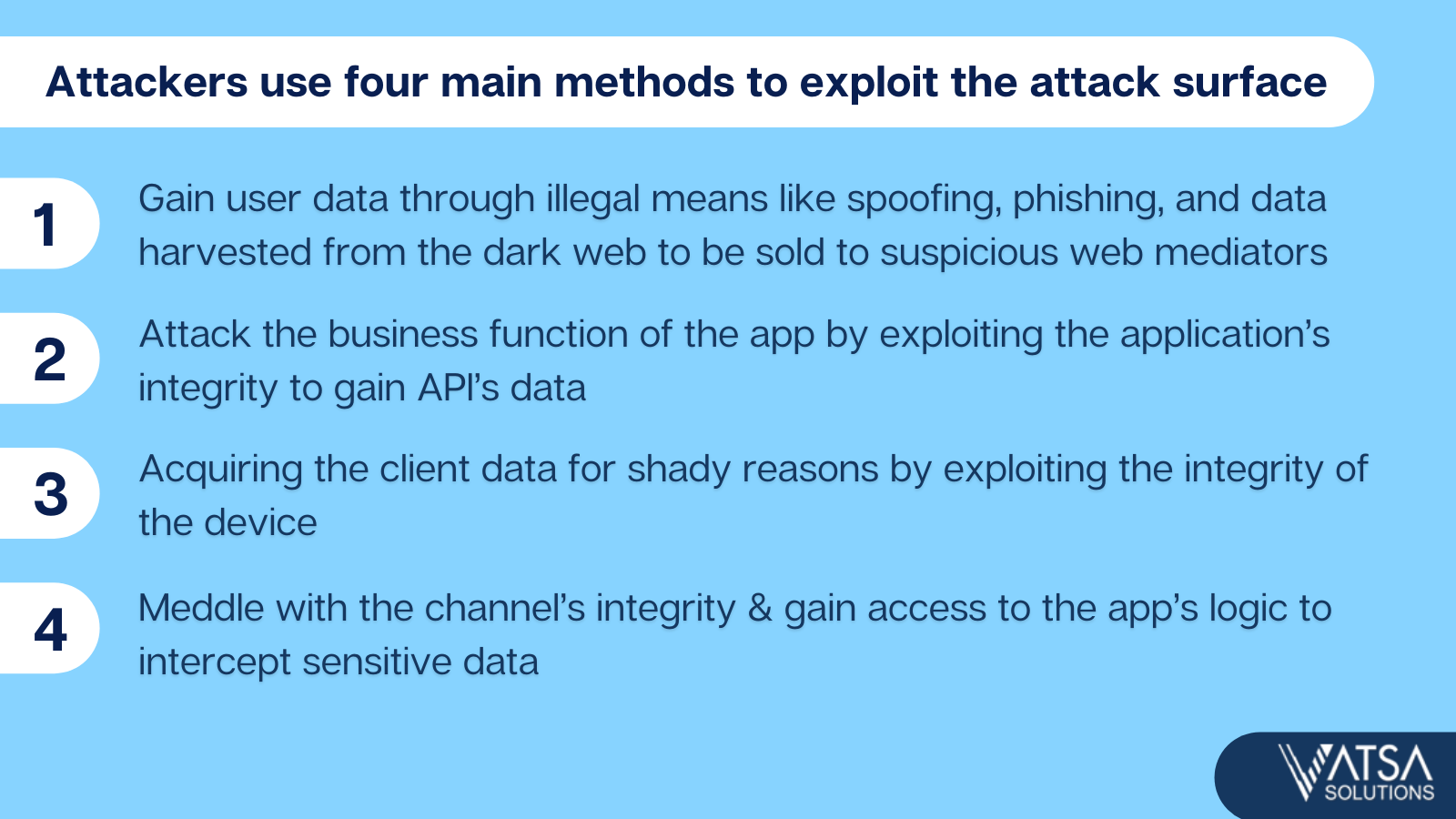
With the Internet of Things (IoT) becoming mainstream, the technology world has rapidly shifted to an era of interconnectivity. Organizations of all sizes are increasingly adopting a digital-first approach to gain a competitive edge. APIs and mobile applications are the two essential factors driving this digital-first economy.Organizations demand secure and reliable mobile transactions to be productive in today’s market.
The increased usage of these two technologies has exposed both data and users to critical security threats like unprotected APIs exposing Personal Identifiable Information (PII) to possible attackers and hackers. An average security breach can cost an organization nearly $8.19mn, according to a report by IBM and Ponemon.
How do attackers exploit the mobile attack surface?
The most prominent attack surfaces prone to exploitation include device integrity, user credentials, API and service vulnerabilities, API channel integrity, and app integrity to gain illegal access to the users’ data.
Mobile apps are built on the idea that regular users will utilize them without malevolent intent. As a result, hackers can exploit attack surfaces to collect sensitive data to break into a device.

Suggested read: Safe Practices to Ensure Mobile App Security
How to boost mobile app and API security?
The ever-increasing global app deployment has reminded developers about the importance of performing a complete security check of the APIs they utilize. Here are five ways organizations can successfully boost API and mobile security:
Prevent unprotected communication
Organizations should allow secure connections only after validating the server request identity. SSL/TLS (Secure Sockets Layer/ Transport Layer Security) protocol implementations on application transport channels are standard methods to verify user identity and sensitive information like tokens and credentials. Organizations should also deploy certificate pinning and industry-accepted certificates verified by authentic Certificate Authority suppliers to avoid self-signed certificates.
Validating input data
Proper validation of the login data and credentials can deny access to harmful code. For unbreachable security, the input validation practice should also be applied to third-party vendors and partners. The validation process needs to occur before the mobile app receives the user’s data – it prevents hackers from forcibly injecting malicious code into the app. Users should be wary of hackers trying to acquire sensitive data and hacking the app on their device by posing as trusted regulators or service providers.
Secure coding
Ensure secured, consistent coding principles that eliminate weak code. It is recommended to always use secure coding protocols like OWASP Secure coding guidelines to avoid low-quality and unprotected code instances. A good practice would be to use obfuscation tools to secure the code and keep hackers away.
Deploying authentication and authorization protocols
Perform a mandatory authentication of requests from the server’s end. Proper authentication ensures harmful and malformed data doesn’t get loaded into the mobile app. Organizations must validate the permissions of authenticated users via backend data. Proper verification stops attackers from utilizing similar-seeming credentials to gain illegal access to the APIs and backend data. Encryption is vital to protect the organization’s and customer data, specifically if the application demands access to customers’ storage.
Fend off reverse engineering attacks by hackers
Many hackers use reverse engineering to attack the app’s integrity regularly. To avoid such situations, restrict the client’s features and maintain a majority of the app’s capability to the server’s side. API keys are inherently insecure and difficult to conceal in a mobile app. To limit the risk of the unauthorized use, make sure the backend server requires a second, independent factor in addition to the API key.
Conclusion
API development and usage have exploded due to the increasing adoption of digitization, cloud computing, and mobile apps. As a result of the complexity and time constraints, API and mobile apps security testing need to be moved to a new phase. Simply said, every organization should recognize the necessity of API and mobile app security to protect their data and work to minimize significant security issues.
To know more about how Vatsa can help your organization with API and mobile security efforts, reach out to us at [email protected].




